Exhibition dates: 27th January – 14th June 2023
Trigger warning: this exhibition contains historic images and text that can be experienced as disturbing or offensive
Ernest Cole (South African, 1940-1990)
Pensive tribesmen, newly recruited to mine labour, awaiting processing and assignment
1960-1966
From House of Bondage Period
Courtesy of the Hasselblad Foundation, Gothenburg, Sweden
© The Ernest Cole Family Trust
“Cole – Photographer”
Upon his tomb is inscribed this epitaph: “Cole – Photographer”
‘Photographer’ could have had the prefix: ethical, conscientious, brave, magnificent. But there is no need… Ernest Cole was a photographer.
Cole fled South Africa in 1966 in order to publish his seminal book about living under apartheid, House of Bondage (1967), and then lived a nomadic existence around the world until his death, never returning to the country of his birth.
I feel so sad that this legend of photography died penniless and living rough on the streets of New York in 1990.
But then I rejoice in the photographs that he left us. For (unlike so many photographs) they are memorable. They make us remember that we must respect each other – through an ability to see a person as he is, to be aware of his unique individuality.
“Respect is not fear and awe, it denotes, in accordance with the root of the word (respicere = to look at), the ability to see a person as he is, to be aware of his unique individuality. Respect means the concern that the other person should grow and unfold as he is. Respect, thus, implies the absence of exploitation … It is clear respect is possible only if I have achieved independence; if I can stand and walk without needing crutches, without having to dominate and exploit anyone else. Respect exists only on the basis of freedom … To respect a person is not possible without knowing him; care and responsibility would be blind if they were not guided by knowledge. Knowledge would be empty if it were not motivated by concern. There are many layers of knowledge; the knowledge which is an aspect of love is one which does not stay at the periphery, but penetrates to the core. It is possible only when I can transcend the concern for myself and see the other person in his own terms.”1
Respect exists only on the basis of freedom … and love.
Dr Marcus Bunyan
1/ Erich Fromm. The Art of Loving. London: Allen and Unwin, 1957, pp. 28-29.
For more information please read my 2013 paper ‘Ernest Cole: Journeys through photojournalism, social documentary photography and art’ which investigates the trajectory of the work of Ernest Cole in order to understand how it developed under the influence of the South African Apartheid system. (2,316 words)
For more photographs from House of Bondage please see the Moderna Museet website.
Many thankx to FOAM for allowing me to publish the photographs in the posting. Many thankx to my friend and fellow artist Drager Meurtant for visiting the exhbition for me and allowing me to publish his photographs of the exhibition in the posting. Please click on the photographs for a larger version of the image.
“I knew what I must do. I would show the world what the white South African had done to the black.”
Ernest Cole
“Cole was born Ernest Levi Tsoloane Kole in 1940, to a working-class Black family in a Black township outside the city of Pretoria. Growing into that society he came to know, with a depth of understanding that only belonging could bring, both its richness and the hardship and humiliation imposed by apartheid. As a boy he photographed people in the township for a shilling a time. By the age of eighteen he had begun to work as a photojournalist, and within a few years he was deeply committed to his essay on what it meant to be Black under apartheid. At age twenty-six, to escape the Security Police and to publish his seminal book, House of Bondage, he went into bitter and destructive exile. Cancer killed him in 1990. Apartheid destroyed him.”
David Goldblatt
Foam x Aperture: Celebrating the Legacy of Ernest Cole
For the current exhibition House of Bondage by Ernest Cole, Foam has joined forces with Aperture to host a special online event celebrating the enduring legacy of Ernest Cole (1940-1990). During the evening, a distinguished panel of experts will share their insights and reflections on Cole’s powerful photographic work, which captured the brutal realities of apartheid-era South Africa, exposing the dehumanising effects of racial oppression in the daily life of black South Africans.
The Mines
Installation view of the exhibition Ernest Cole: House of Bondage at Foam, Amsterdam showing at left, Cole’s Pensive tribesmen, newly recruited to mine labour, awaiting processing and assignment (1960-1966, above)
Ernest Cole (South African, 1940-1990)
After processing they wait at railroad station for transportation to mine. Identity tag on wrist shows shipment of labor to which man is assigned
1960-1966
Gelatin silver print
8 11/16 x 12 5/8 in. (22 x 32cm)
Courtesy of the Hasselblad Foundation, Gothenburg, Sweden
© The Ernest Cole Family Trust
Ernest Cole (South African, 1940-1990)
Miner sleeps on concrete slab, must supply own bedding (installation view)
1960-1966
Gelatin silver print
On loan from Magnum Photos
© The Ernest Cole Family Trust
Photo: Drager Meurtant
Caption from House of Bondage
Installation view of the exhibition Ernest Cole: House of Bondage at Foam, Amsterdam showing at right an Untitled image from Cole’s House of Bondage (1960-1966, below)
Ernest Cole (South African, 1940-1990)
Untitled (South Africa 1960s)
1960-1966
From House of Bondage Period
Courtesy of the Hasselblad Foundation, Gothenburg, Sweden
© The Ernest Cole Family Trust
Installation view of the exhibition Ernest Cole: House of Bondage at Foam, Amsterdam
Foam proudly presents the first overview of the work of South African photographer Ernest Cole. The exhibition includes parts of his archive, which had long been considered lost. The overview was assembled in collaboration with the Ernest Cole Family Trust, which in 2017 secured control of Cole’s archive. Restless and tenacious, yet dedicated and empathetic. It is difficult to define the enigmatic South African photographer Ernest Cole (1940-1990). He is celebrated for his tireless documentation of Black lives in South Africa under apartheid: a regime of institutionalised racial segregation that was in effect from 1948 to the early 1990s.
As one of the first Black freelance photographers, Cole offered with his work an unprecedented view from the inside. Born in a township, Cole experienced the strains of apartheid first-hand. By having himself reclassified from ‘black’ to ‘coloured’, he managed to access places where most South Africans were banned. He risked his life exposing the grim reality of racial segregation, by documenting miners inside the mines, police controls and the demolition of townships, among others.
Cole lived a nomadic life, exiled from his native South Africa for his photographic publication House of Bondage (1967). The chapters from this book form the narrative for this exhibition. The book openly denounced the apartheid regime and was promptly banned in South Africa. In risk of arrest, Cole had gone into exile in 1966. He would never return to South Africa again.
Living between Sweden and the United States, Cole continued to document Black lives in the wake of the Civil Rights Movement. However, being Black and stateless proved debilitating there too, and a publication of his American work would never materialise. Towards the end of his life, Cole became increasingly disillusioned and reportedly started living on the streets of New York. He died at age 49 from pancreatic cancer. Much of Cole’s work had been considered lost, until the rediscovery of 60,000 negatives and contact sheets in the safety deposit boxes of a Swedish bank in 2017.
Besides (colour) images from his time in America, the archive contains unpublished photographs and contact sheets from House of Bondage. The exhibition in Foam is the first large scale overview of Cole’s work to include parts of his retrieved archive.
About the exhibition
As one of the first Black freelance photographers, Cole offered with his work an unprecedented view from the inside. Born in a township, Cole experienced the strains of apartheid first-hand. By having himself reclassified from ‘black’ to ‘coloured’, he managed to access places where most South Africans were banned. He risked his life exposing the grim reality of racial segregation, by documenting miners inside the mines, police controls and the demolition of townships, among others.
This exhibition shows the rediscovery of 60,000 negatives and contact sheets in the safety deposit boxes of a Swedish bank in 2017. Besides (colour) images from his time in America, the archive contains unpublished photographs and contact sheets from House of Bondage. The exhibition in Foam is the first large scale overview of Cole’s work to include parts of his retrieved archive.
The photographs in this exhibition were taken between 1958-1966, unless stated otherwise. All contact sheets are modern prints from scans. Original titles and text from House of Bondage are in quotation marks or italics. The exhibition pens in tandem with the launch of two volumes published by Aperture: the first a republication of House of Bondage, the second presenting US work for the first time in history.
This exhibition was made in collaboration with the Ernest Cole Family Trust and Magnum Photos.
Press release from Foam
Installation view of the exhibition Ernest Cole: House of Bondage at Foam, Amsterdam showing in the background at left the section of the exhibition entitled ‘Banishment’
Banishment
Cole secretly visited Frenchdale, a remote government detention camp. Its inhabitants were banished without trial, on account of their political views. Cole recorded the basis conditions under which they lived in exile, sometimes for decades. Cole’s presence in the camp was unauthorised, and he recalls having to hide from the police during his stay. When he left, he was relieved. “For them and infinity of unremarkable days stretched ahead. For me the frightful nothingness of Frenchdale was about to end (…) ironically, as I re-entered the restricted black life of Johannesburg, I felt free.”
Wall text from the exhibition
Ernest Cole (South African, 1940-1990)
Piet falls asleep with Bible on his face, Africans say: “When the Europeans came, they had the Bible. Now we have the Bible, and they have our land.”
1960-1966
From House of Bondage Period
Courtesy of the Hasselblad Foundation, Gothenburg, Sweden
© The Ernest Cole Family Trust
Caption from House of Bondage
Ernest Cole (South African, 1940-1990)
Frenchdale banishment camp: twelve huts with nothing around them but miles of barren veldt
1960-1966
Vintage print
From House of Bondage Period
On loan from the Arpad A Busson Foundation
© The Ernest Cole Family Trust
Photo: Drager Meurtant
Caption from House of Bondage
Education for Servitude
Cole’s anger about apartheid education is inescapable in his chapter ‘Education for Servitude’, for which he visited various Bantu schools. His images and handwritten notes from a visit to a school in Vlakfontein in 1965 testify to overly crowded and understaffed classrooms in which children are studying to be “educated for servitude”.
Wall text from the exhibition
Installation views of the exhibition Ernest Cole: House of Bondage at Foam, Amsterdam showing photographs from the section ‘Education for Servitude’: in the bottom image at left, Cole’s Earnest boy (1960-1966, below); and at right, Teacher toward end of her day in school, South Africa (1960-1966, below)
Ernest Cole (South African, 1940-1990)
Earnest boy squats on haunches and strains to follow lesson in heat of packed classroom, South Africa
1960-1966
From House of Bondage Period
Courtesy of the Hasselblad Foundation, Gothenburg, Sweden
© The Ernest Cole Family Trust
Ernest Cole (South African, 1940-1990)
Teacher toward end of her day in school, South Africa
1960-1966
From House of Bondage Period
Courtesy of the Hasselblad Foundation, Gothenburg, Sweden
© The Ernest Cole Family Trust
Ernest Cole (South African, 1940-1990)
SOUTH AFRICA. 1960s. Students kneel on floor to write. Government is casual about furnishing schools for blacks
1960-1966
From House of Bondage Period
Courtesy of the Hasselblad Foundation, Gothenburg, Sweden
© The Ernest Cole Family Trust
Ernest Cole (South African, 1940-1990)
Teacher is stifling with one her two daily sessions of one hundred students each (installation view)
1960-1966
From House of Bondage Period
© The Ernest Cole Family Trust
Photo: Drager Meurtant
Caption from House of Bondage
Black Spots
Installation views of the exhibition Ernest Cole: House of Bondage at Foam, Amsterdam showing photographs and contact sheets from Cole’s series Black Spots from Cole’s House of Bondage (see photographs below)
Installation view of the exhibition Ernest Cole: House of Bondage at Foam, Amsterdam showing photographs and contact sheets from Cole’s series Black Spots from Cole’s House of Bondage
Photo: Drager Meurtant
Ernest Cole (South African, 1940-1990)
Untitled (Black Spots) (installation view)
1960-1966
Vintage print
From House of Bondage Period
On loan from the Arpad A Busson Foundation
© The Ernest Cole Family Trust
Photo: Drager Meurtant
Ernest Cole (South African, 1940-1990)
African township is bulldozed out of existence to make way for white expansion (Black Spots) (installation view)
1960-1966
Vintage print
From House of Bondage Period
© The Ernest Cole Family Trust
Photo: Drager Meurtant
“African township is bulldozed out of existence to make way for white expansion. Government trucks will move residents and their few possessions to matchbox houses in new locations, usually in remote areas, perhaps not even named on the map. Even to live there, families must qualify. People at right did not, and thus have not only had their homes razed, but have nowhere to go.”
Caption from House of Bondage
Ernest Cole (South African, 1940-1990)
With older children in school and mothers at work, baby bay-minders are common sight on African township streets (installation view)
1966 or before
Vintage print
From House of Bondage Period
On loan from the Arpad A Busson Foundation
© The Ernest Cole Family Trust
Photo: Drager Meurtant
Caption from House of Bondage
Ernest Cole (South African, 1940-1990)
SOUTH AFRICA. 1960s. Black Spots
1960-1966
From House of Bondage Period
Courtesy of the Hasselblad Foundation, Gothenburg, Sweden
© The Ernest Cole Family Trust
Ernest Cole (South African, 1940-1990)
SOUTH AFRICA. 1960s. Black Spots
1960-1966
From House of Bondage Period
Courtesy of the Hasselblad Foundation, Gothenburg, Sweden
© The Ernest Cole Family Trust
Ernest Cole (South African, 1940-1990)
SOUTH AFRICA. Mamelodi. 1960s. Typical location has acres of identical four-room houses on nameless streets. Many are hours by train from city jobs
1960-1966
From House of Bondage Period
Courtesy of the Hasselblad Foundation, Gothenburg, Sweden
© The Ernest Cole Family Trust
Ernest Cole (South African, 1940-1990)
SOUTH AFRICA. 1960s. After a few drinks, young mother begins to sag
1960-1966
From House of Bondage Period
Courtesy of the Hasselblad Foundation, Gothenburg, Sweden
© The Ernest Cole Family Trust
Ernest Cole (South African, 1940-1990)
Until the Government went into the business of selling liquor to Africans, it was illegal for them to drink. They did drink, however, in placed called shebeens, where many still prefer to gather. In a shebeen, oil can containing potent liquor is passed from man to man; jokingly they call it “crude oil.” (installation view)
1960-1966
Vintage print
From House of Bondage Period
On loan from the Arpad A Busson Foundation
© The Ernest Cole Family Trust
Photo: Drager Meurtant
Caption from the House of Bondage
Ernest Cole (South African, 1940-1990)
Atmosphere of the shebeens is free, in contrast to that of regimented Government beer halls (installation view)
1960-1966
Vintage print
From House of Bondage Period
On loan from the Arpad A Busson Foundation
© The Ernest Cole Family Trust
Photo: Drager Meurtant
Caption from the House of Bondage
Installation views of the exhibition Ernest Cole: House of Bondage at Foam, Amsterdam
Photos: Drager Meurtant
Ernest Cole (South African, 1940-1990)
SOUTH AFRICA. 1960s. Servants are not forbidden to love. Woman holding child said, “I love this child, though she’ll grow up to treat me just like her mother does. Now she is innocent.”
1960-1966
From House of Bondage Period
Courtesy of the Hasselblad Foundation, Gothenburg, Sweden
© The Ernest Cole Family Trust
Nightmare Rides
Installation view of the exhibition Ernest Cole: House of Bondage at Foam, Amsterdam showing Nightmare Rides (1960-1966, all below) from the House of Bondage Period
Photo: Drager Meurtant
Encouraged by his boss Jürgen Schadeberg, and inspired by other photographers at Drum – such as Peter Magubane, Bob Gosani and Alf Kumalo – Cole became one of South Africa’s first Black freelance photojournalists. Working in Johannesburg but not being allowed to live there, he commuted to the office by train. The platforms and carriages were segregated and overcrowded leading to bizarre situations that inspired the series ‘Nightmare Rides’. The item was commissioned by the Rand Daily Mail and first published in the Netherlands in 1962 as Mensen als vee [People as Cattle] in Katholieke Illustratie.
Wall text from the exhibition
Ernest Cole (South African, 1940-1990)
Untitled (Nightmare Rides) (installation view)
1960-1966
From House of Bondage Period
© The Ernest Cole Family Trust
Photo: Drager Meurtant
Ernest Cole (South African, 1940-1990)
Untitled (Nightmare Rides) (installation view)
1960-1966
From House of Bondage Period
© The Ernest Cole Family Trust
Photo: Drager Meurtant
Ernest Cole (South African, 1940-1990)
Untitled (Nightmare Rides) (installation view)
1960-1966
From House of Bondage Period
© The Ernest Cole Family Trust
Photo: Drager Meurtant
“Twice each day, at the morning and evening rush hours, the segregated station platforms are a bizarre sight. At one end, a few white trailers stand about, surrounded by space. At the other, a dense mass of Africans is congregated, crowded and compressed.”
~ Ernest Cole
Ernest Cole (South African, 1940-1990)
SOUTH AFRICA. 1960s. Africans throng Johannesburg station platform during late afternoon rush hour. The train accelerates with its load of clinging passengers. They ride like this through rain and cold, some for the entire journey
1960-1966
From House of Bondage Period
Courtesy of the Hasselblad Foundation, Gothenburg, Sweden
© The Ernest Cole Family Trust
Ernest Cole (South African, 1940-1990)
All stand packed together on the floor and seats (installation view)
1960-1966
From House of Bondage Period
Vintage print
On loan from the Arpad A Busson Foundation
© The Ernest Cole Family Trust
Photo: Drager Meurtant
Installation views of the exhibition Ernest Cole: House of Bondage at Foam, Amsterdam showing in the bottom image at right, Untitled (Police and Passes) (1960-1966, below) from the House of Bondage Period
Photos: Drager Meurtant
Police and Passes
Ernest Cole (South African, 1940-1990)
SOUTH AFRICA. 1960s. These boys were caught trespassing in a white area
1960-1966
From House of Bondage Period
Courtesy of the Hasselblad Foundation, Gothenburg, Sweden
© The Ernest Cole Family Trust
Ernest Cole (South African, 1940-1990)
SOUTH AFRICA. 1960s. A pass raid outside Johannesburg station. Every African had to show his pass before being allowed to go about his business. Sometimes these police checks broadened into body and belongings searches
1960-1966
From House of Bondage Period
Courtesy of the Hasselblad Foundation, Gothenburg, Sweden
© The Ernest Cole Family Trust
Ernest Cole (South African, 1940-1990)
Untitled (Police and Passes)
1960-1966
From House of Bondage Period
© The Ernest Cole Family Trust
“The standard by which the police operate is cruelly simple. To them every black man is a criminal suspect. In a technical sense, the police are not far off the mark to be so suspicious. The laws of apartheid are a far-reaching tangle of restrictions, reaching so deeply into everyday life that it is a rare African who does not violate some law.”
~ Ernest Cole
Ernest Cole (South African, 1940-1990)
Caption unknown (For Whites Only) (installation view)
1960-1966
Vintage print
On loan from the Arpad A Busson Foundation
© The Ernest Cole Family Trust
Photo: Drager Meurtant
(According to Cole’s colleague Struan Robertson, Johannesburg city benches were for white people only and were so inscribed)
Ernest Cole (South African, 1940-1990)
New York City
1971
Courtesy of the Hasselblad Foundation, Gothenburg, Sweden
© The Ernest Cole Family Trust
Ernest Cole (South African, 1940-1990)
Harlem, New York City
1971
Courtesy of the Hasselblad Foundation, Gothenburg, Sweden
© The Ernest Cole Family Trust
More photographs from Ernest Cole’s House of Bondage
Ernest Cole (South African, 1940-1990)
“Penny, baas, please baas, I hungry…” This plaint is part of nightly scene in Golden City, as black boys beg from whites. They may be thrown a coin or, as here, they may get slapped in the face
1960-1966
[Caption from House of Bondage]
From House of Bondage Period
© The Ernest Cole Family Trust Courtesy of the Hasselblad Foundation, Gothenburg, Sweden
Ernest Cole (South African, 1940-1990)
Handcuffed blacks were arrested for being in white area illegally
1960-1966
[Caption from House of Bondage]
From House of Bondage Period
© The Ernest Cole Family Trust Courtesy of the Hasselblad Foundation, Gothenburg, Sweden
Ernest Cole (South African, 1940-1990)
A student who said he was going to fetch his textbook is pulled in. To prove he was still in school he showed his fountain pen and ink-stained fingers. But that was not enough; in long pants he looked older than sixteen
1960-1966
Gelatin silver print
8 11/16 x 12 5/8 in. (22 cm x 32cm)
Courtesy of the Hasselblad Foundation, Gothenburg, Sweden
© The Ernest Cole Family Trust
Ernest Cole (South African, 1940-1990)
Africans throng Johannesburg station platform during late afternoon rush
1960-1966
Gelatin silver print
8 11/16 x 12 5/8 in. (22 x 32cm)
Courtesy of the Hasselblad Foundation, Gothenburg, Sweden
© The Ernest Cole Family Trust
Ernest Cole (South African, 1940-1990)
Untitled (White Washroom)
1960-1966
Gelatin silver print
12 5/8 x 8 11/16 in. (32 x 22cm)
Courtesy of the Hasselblad Foundation, Gothenburg, Sweden
© The Ernest Cole Family Trust
Ernest Cole (South African, 1940-1990)
Newspapers are her carpet, fruit crates her chairs and table
1960-1966
Gelatin silver print
12 5/8 x 8 11/16 in. (32 x 22cm)
Courtesy of the Hasselblad Foundation, Gothenburg, Sweden
© The Ernest Cole Family Trust
Foam
Keizersgracht 609
1017 DS Amsterdam
The Netherlands
Phone: + 31 20 5516500
Opening hours:
Monday – Wednesday 10am – 6pm
Thursday – Friday 10am – 9pm
Sat – Sun 10am – 6pm

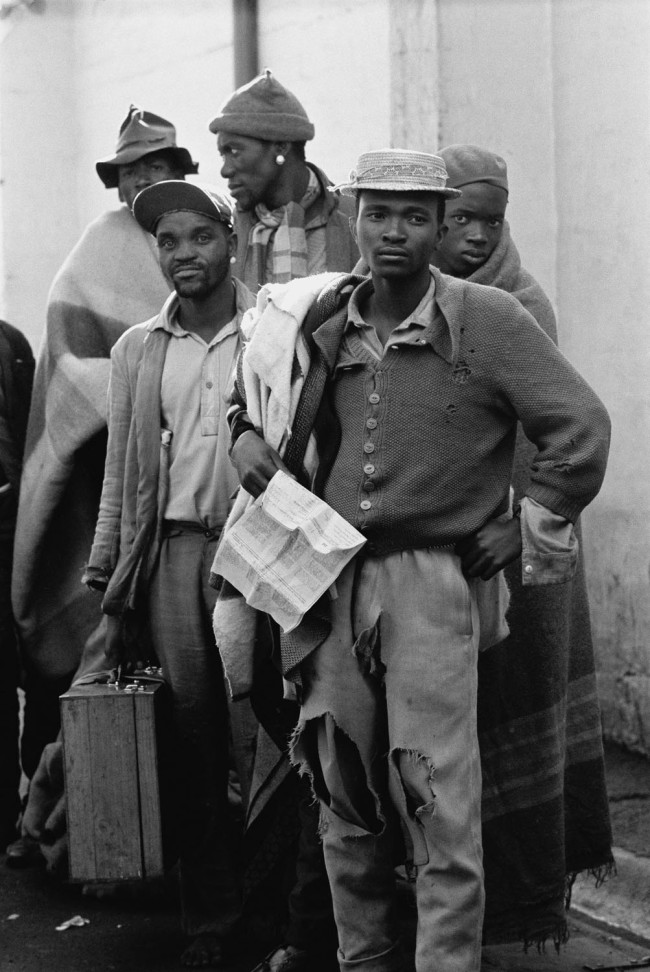

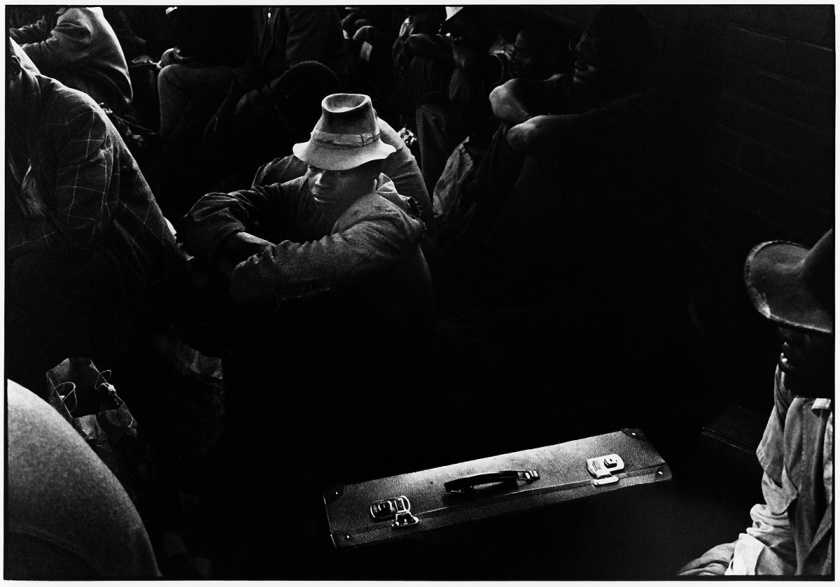
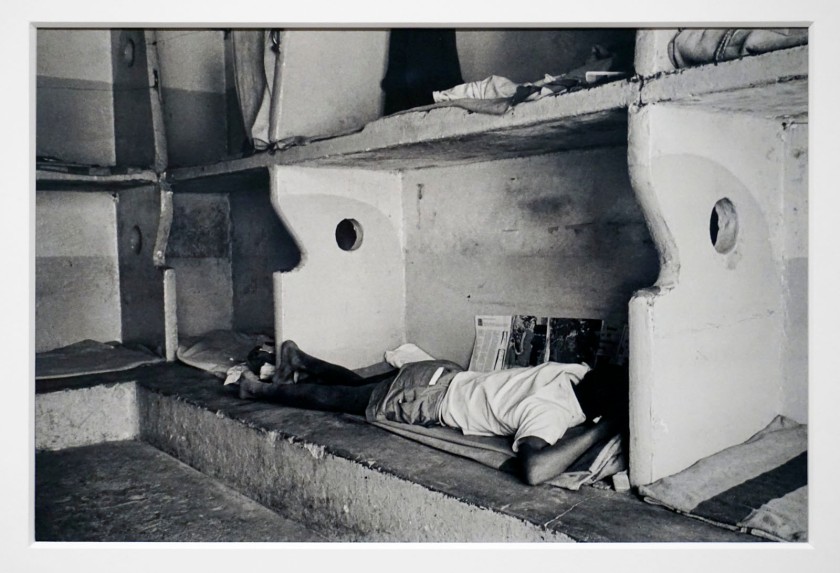

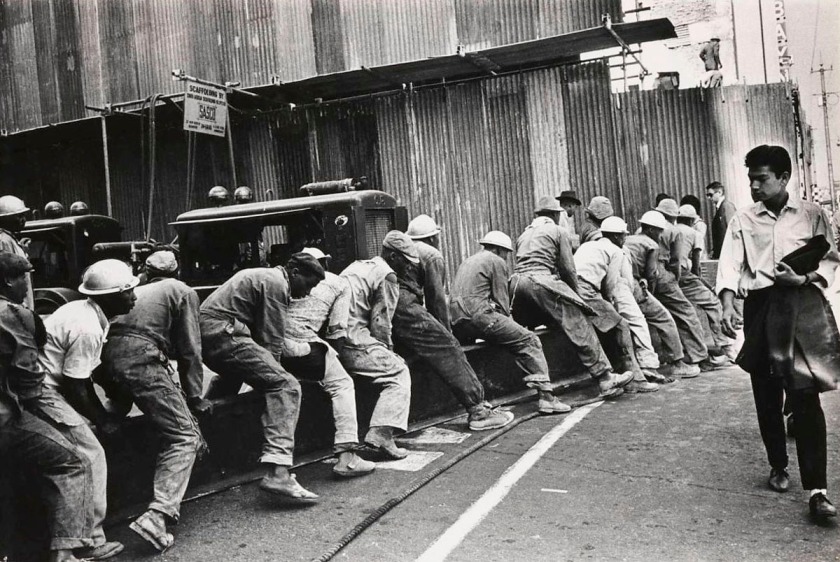
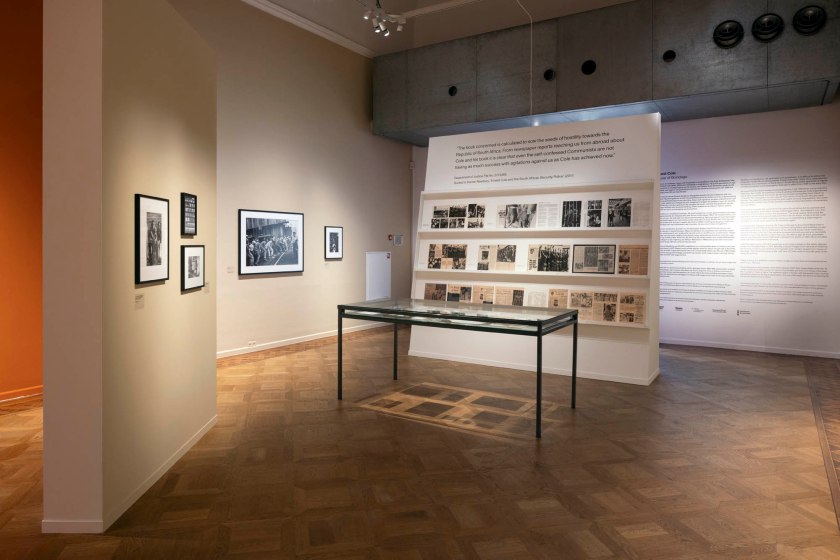
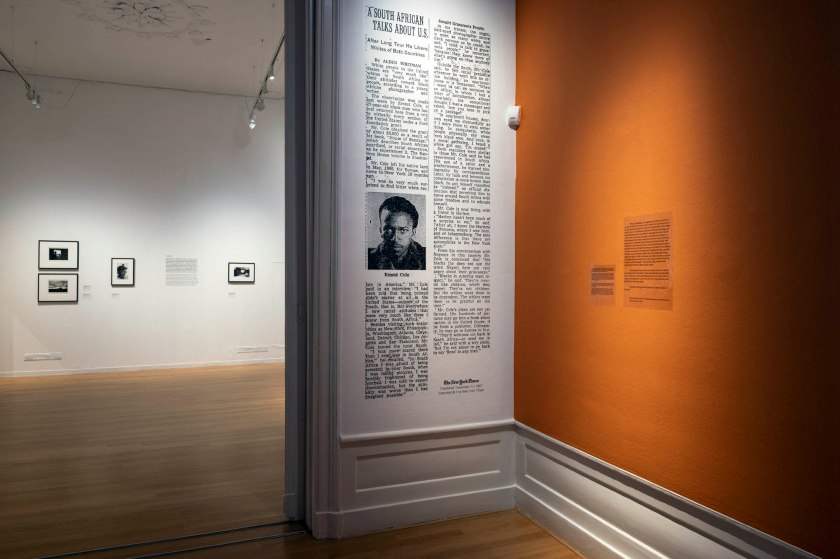


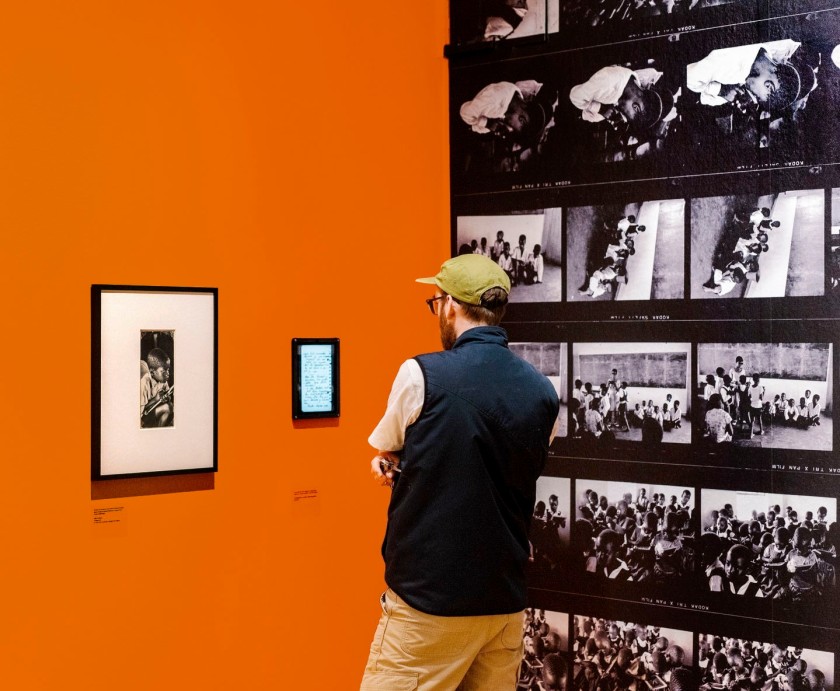





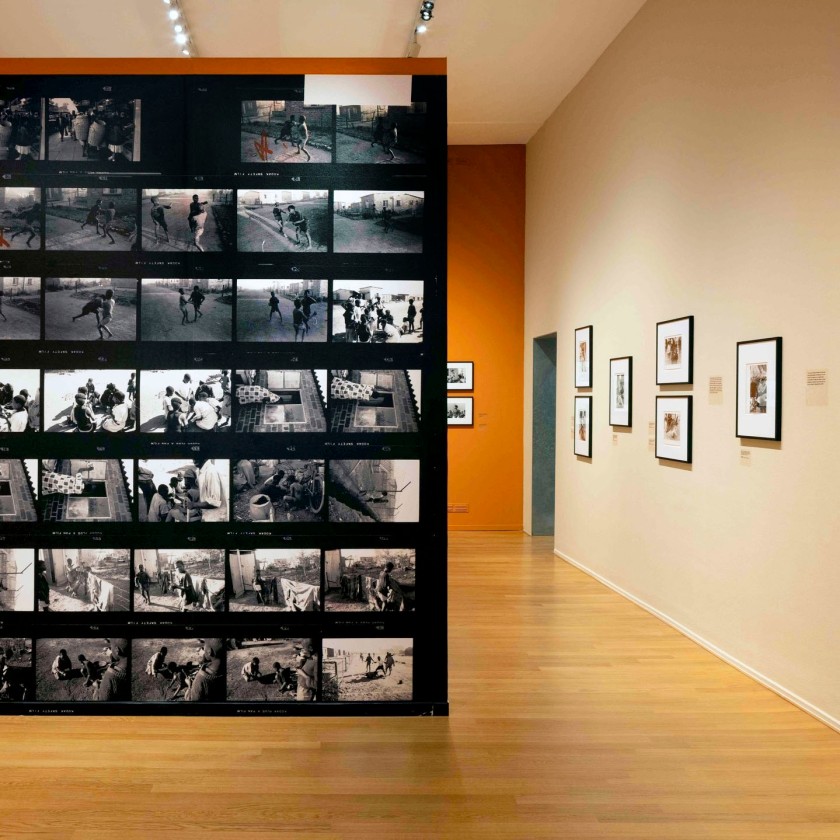

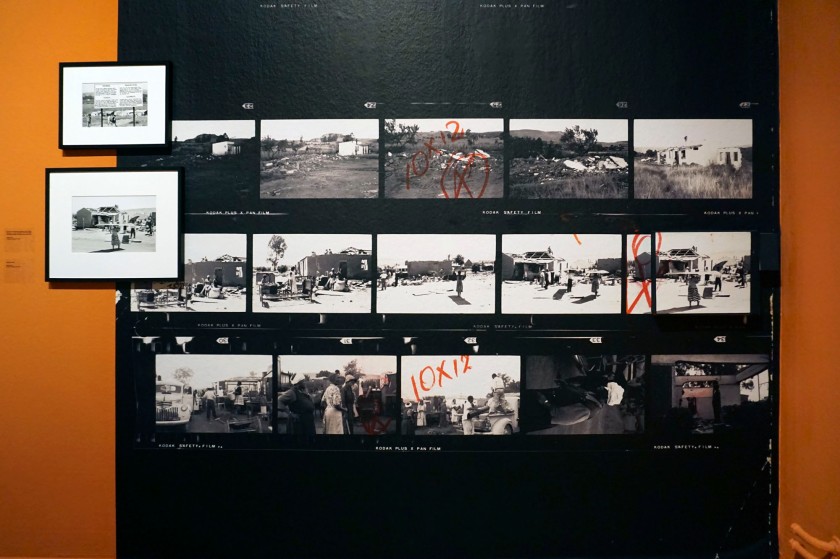
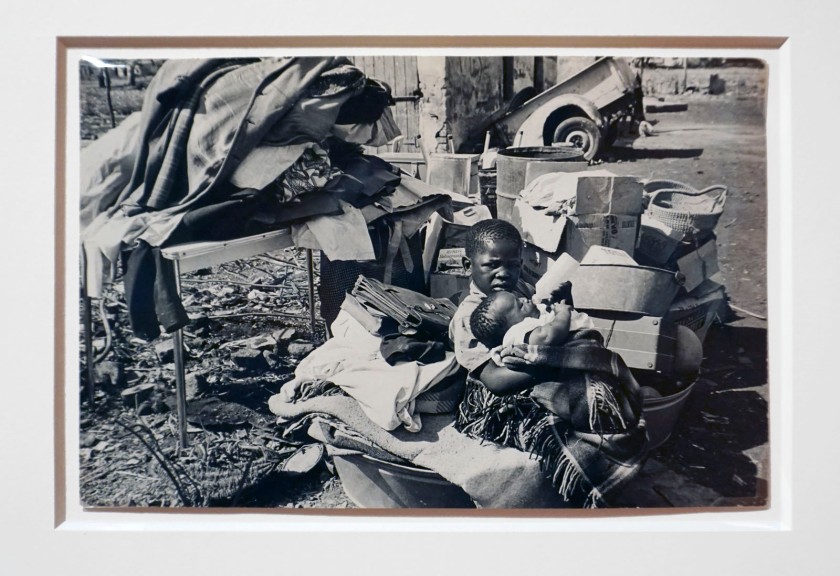
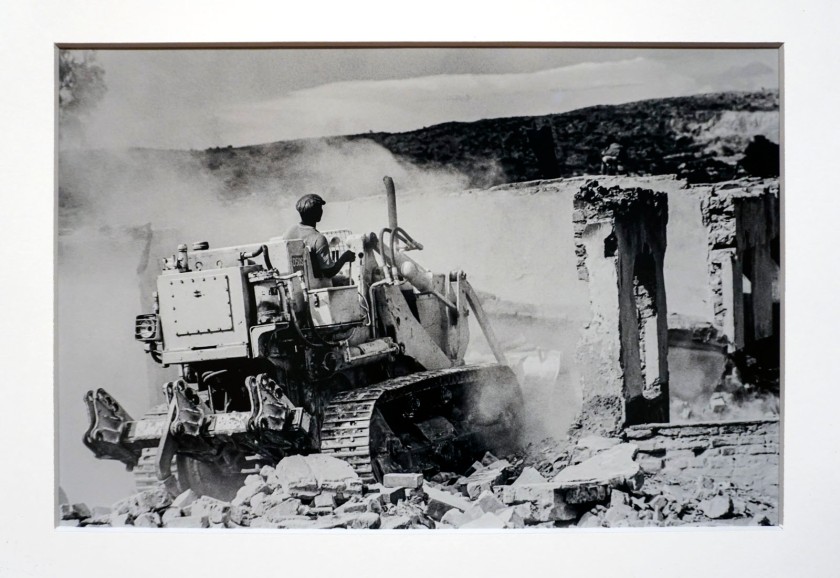


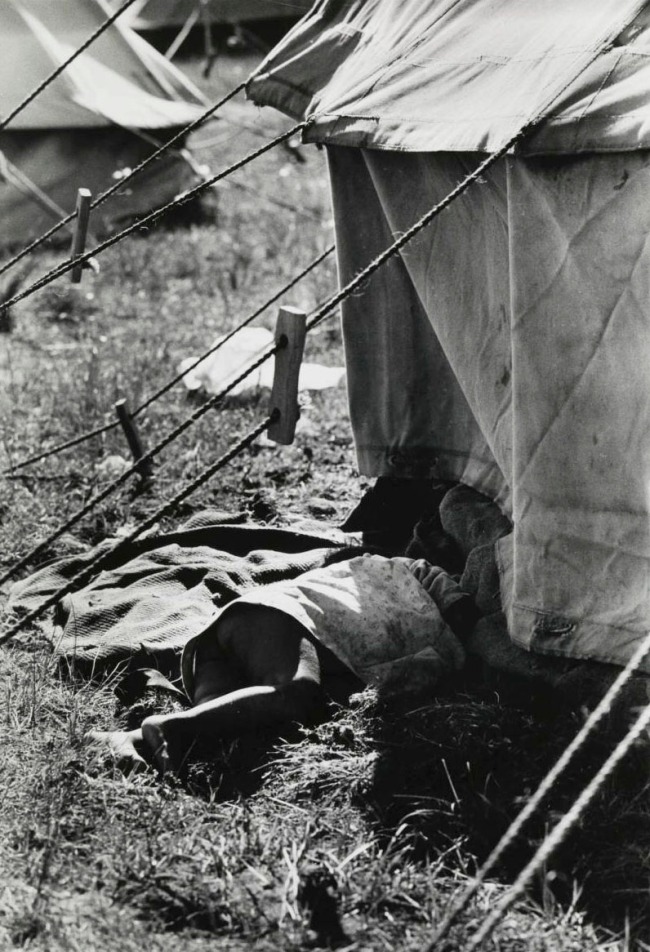
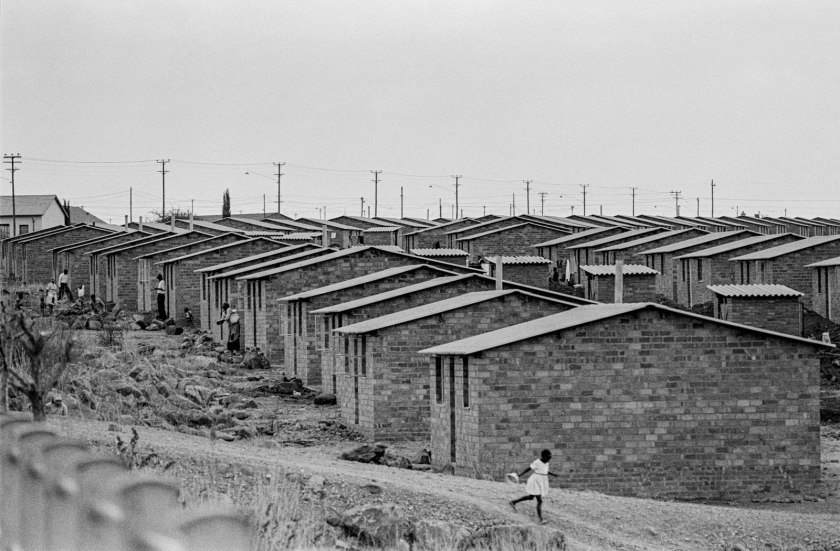

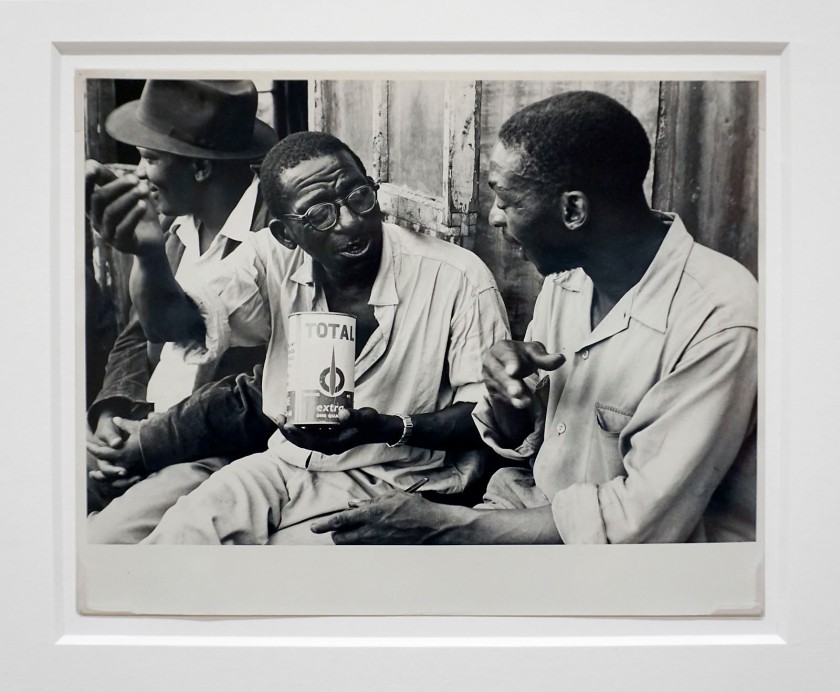
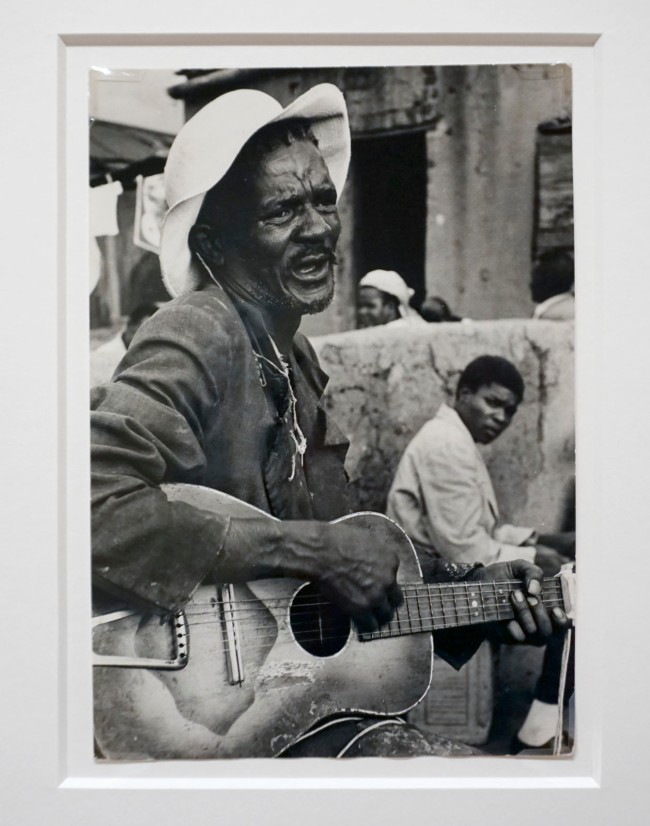


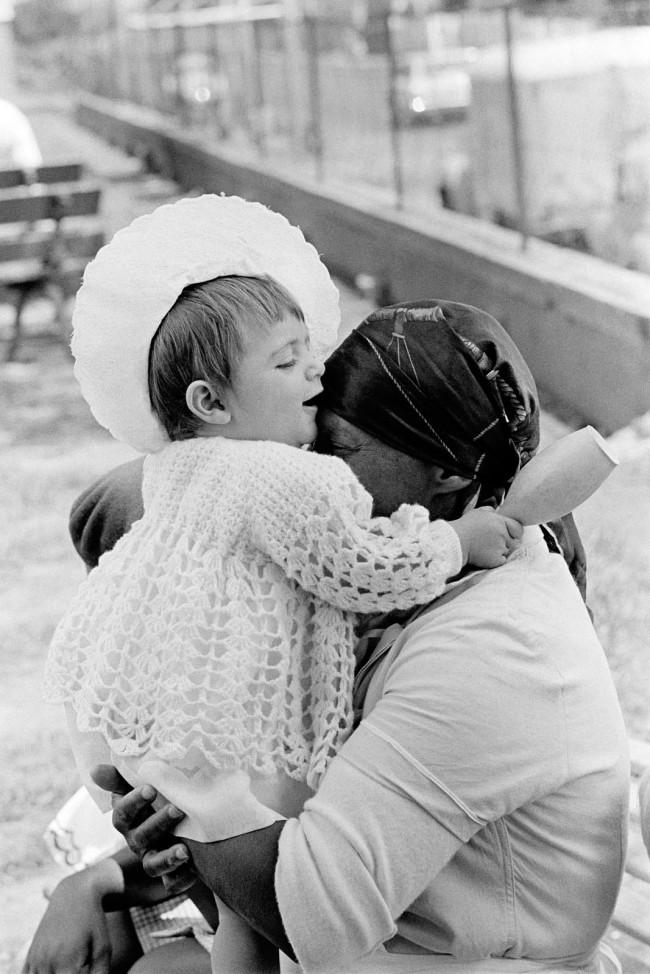

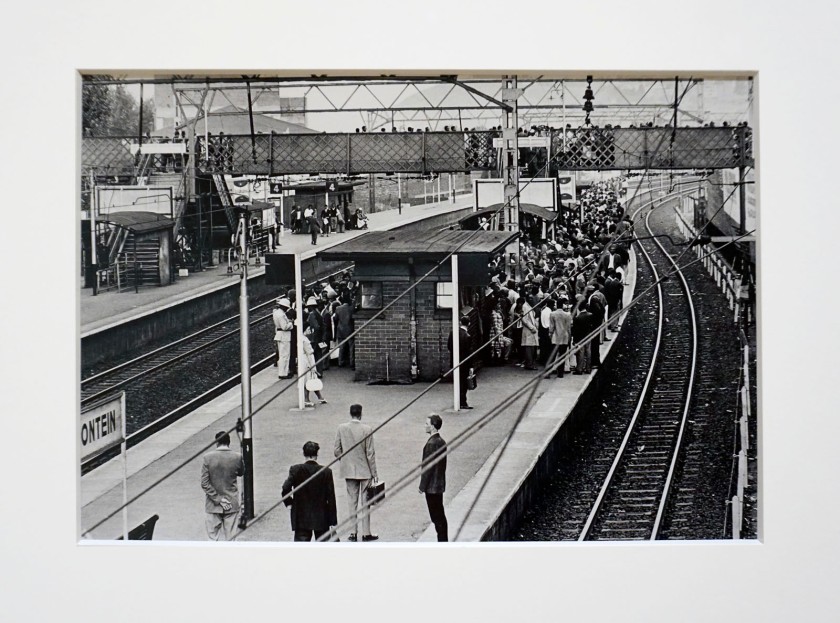
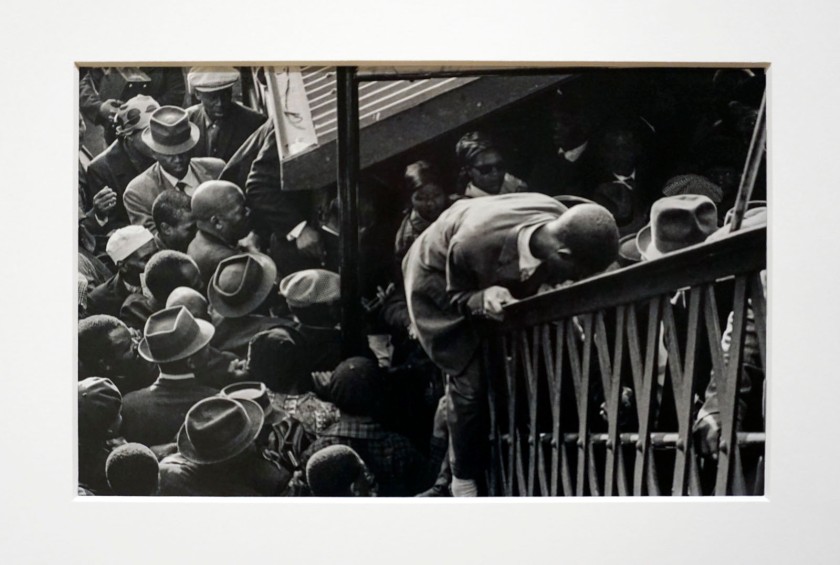
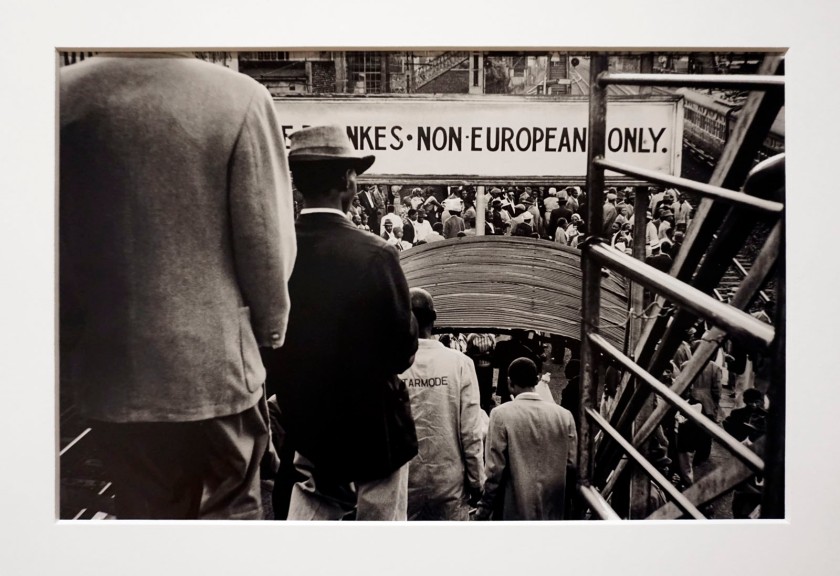
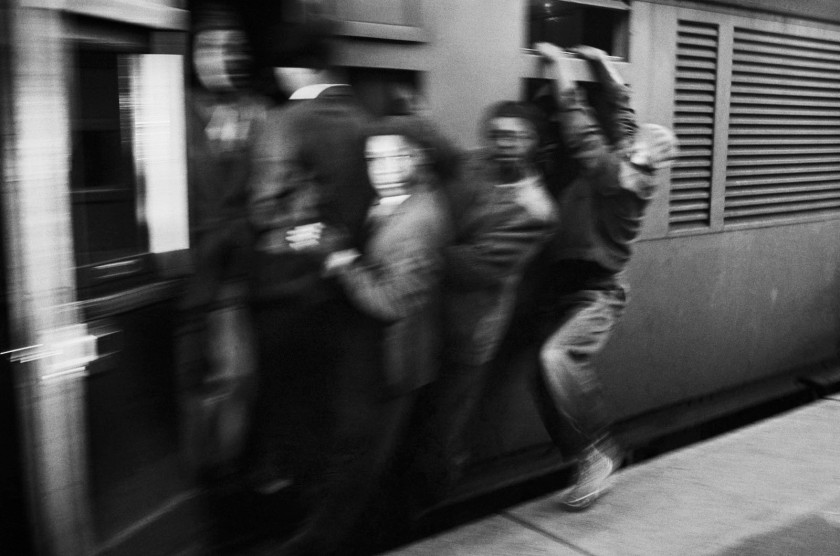
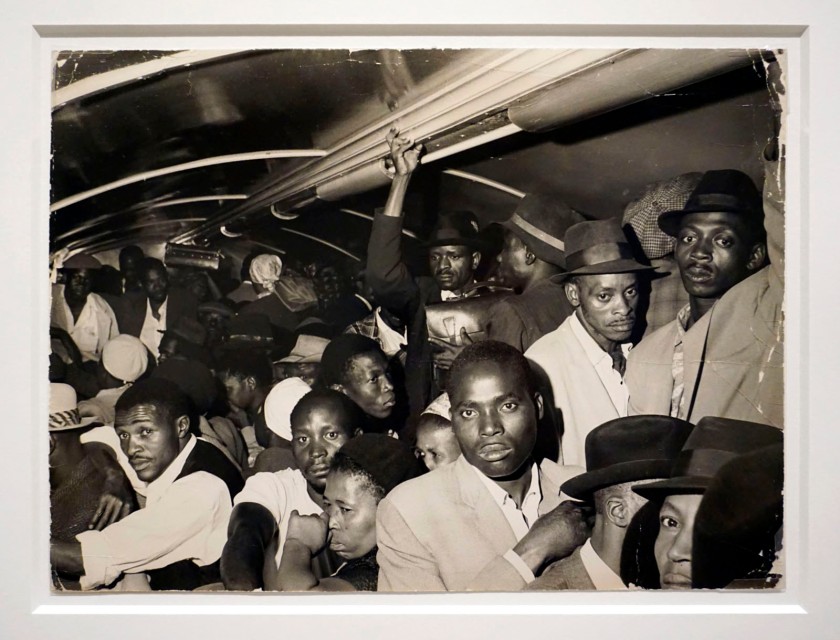

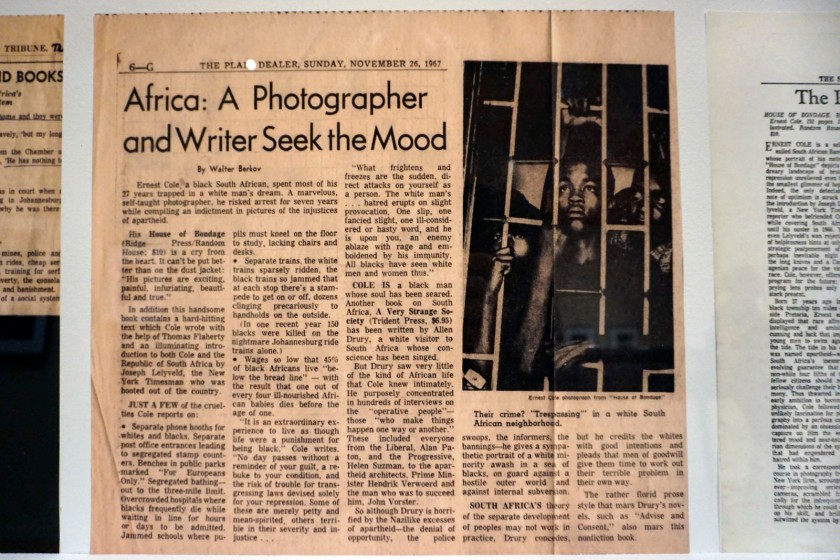


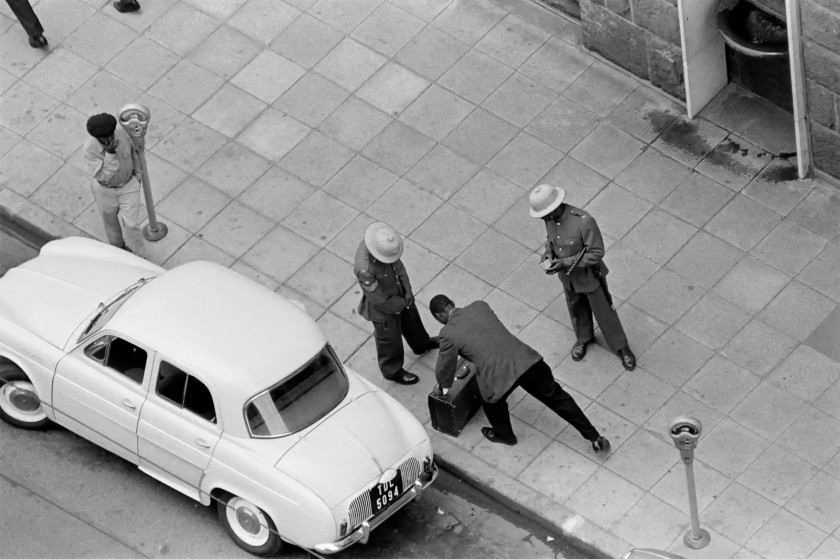
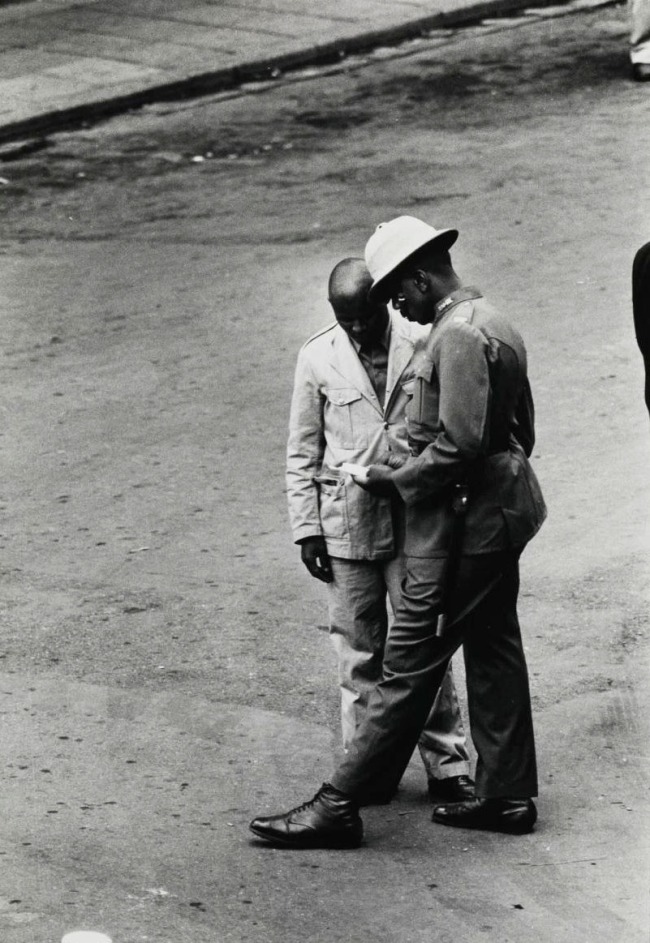
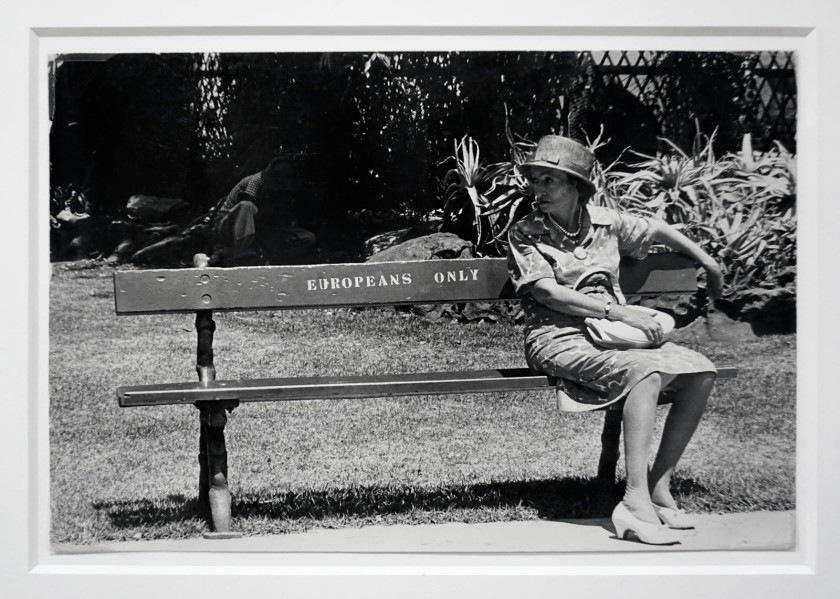



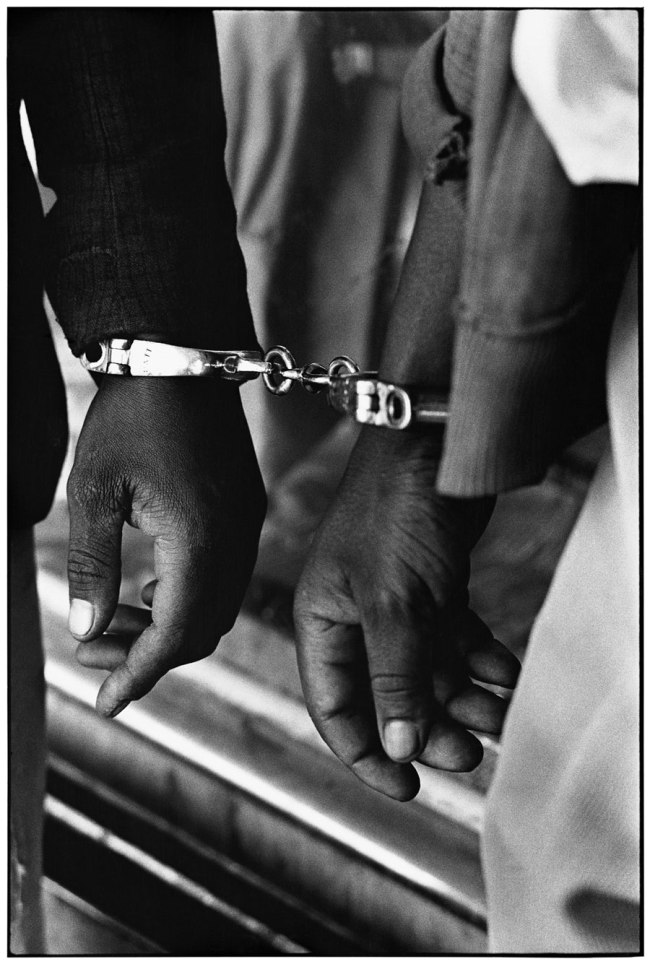
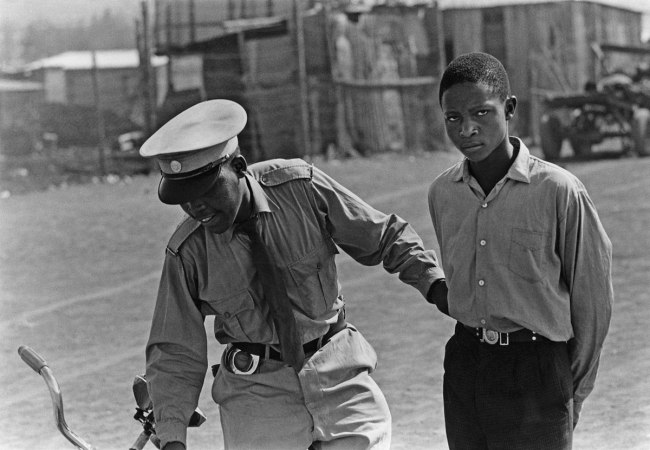

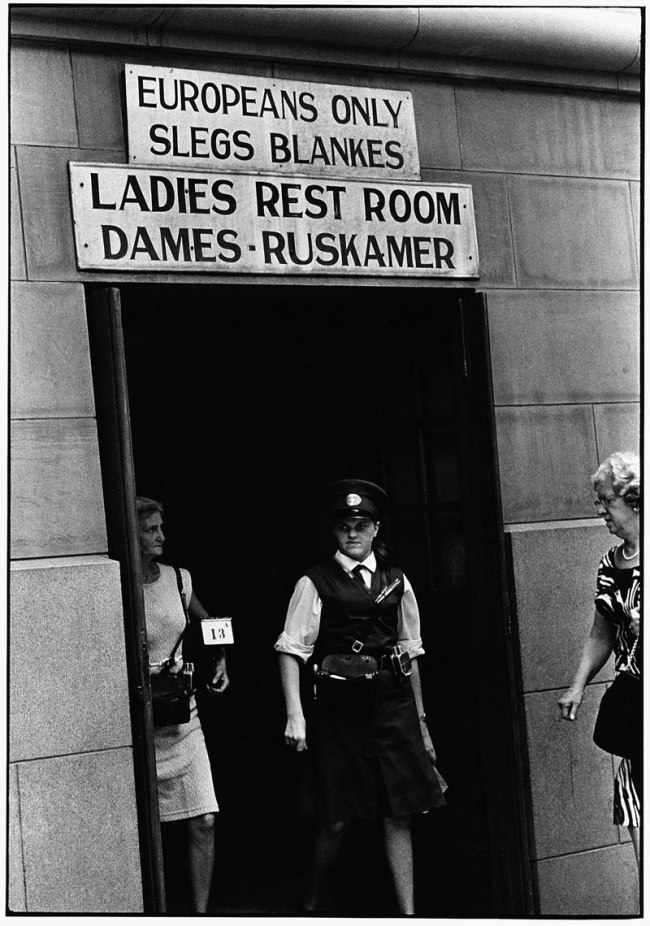

You must be logged in to post a comment.